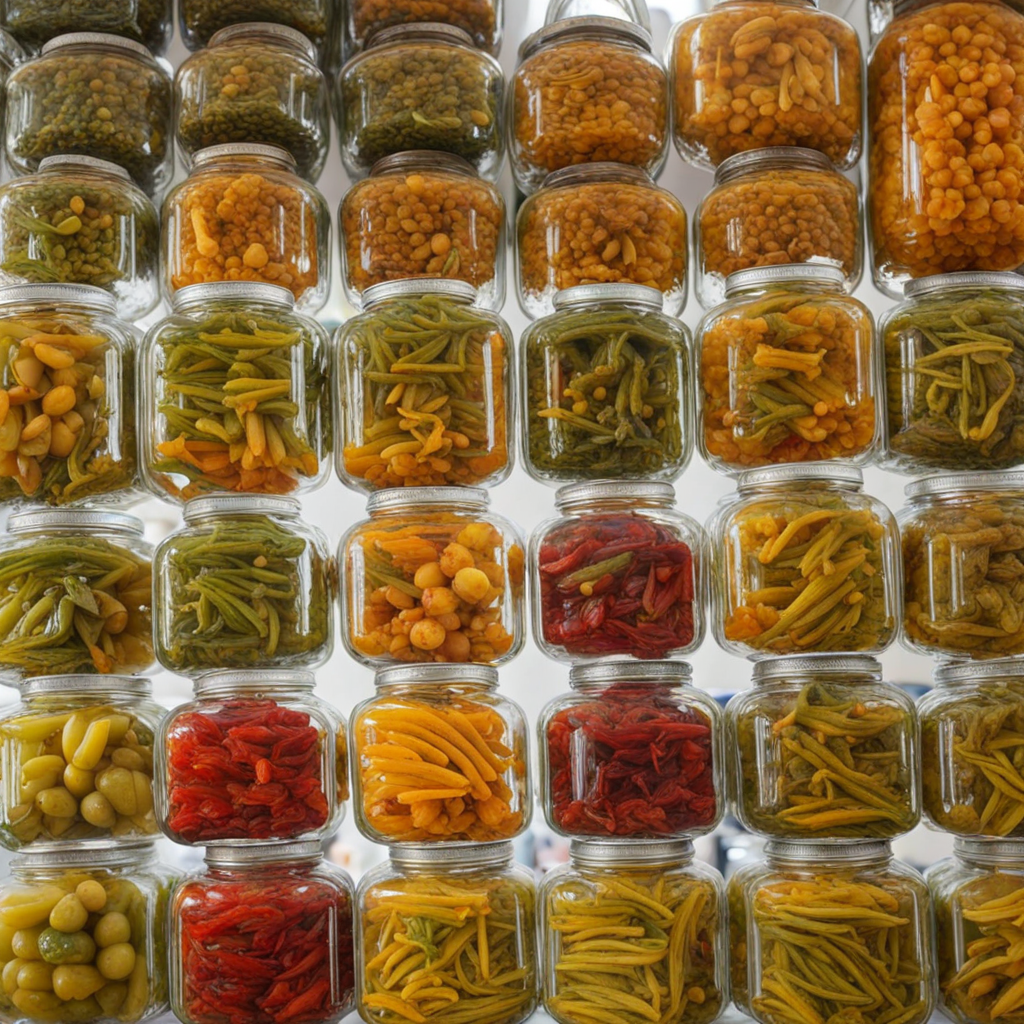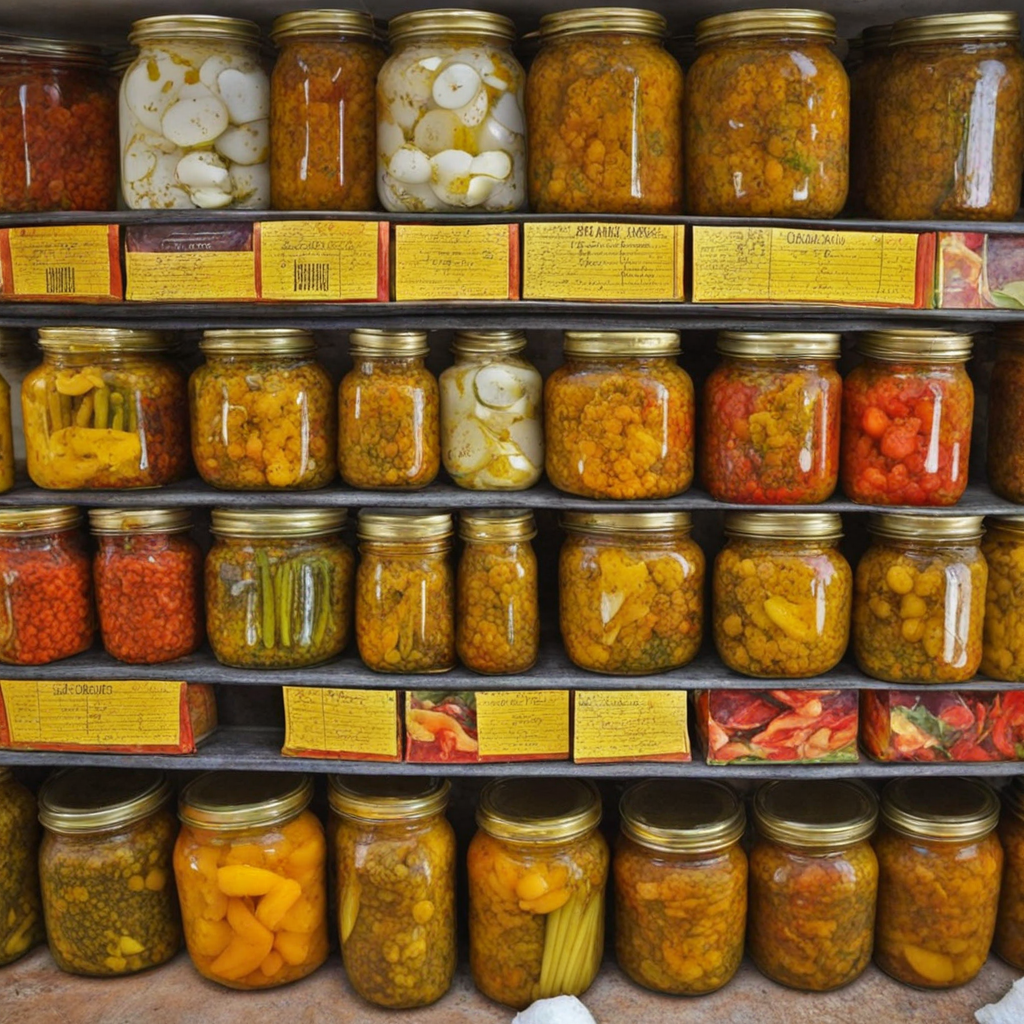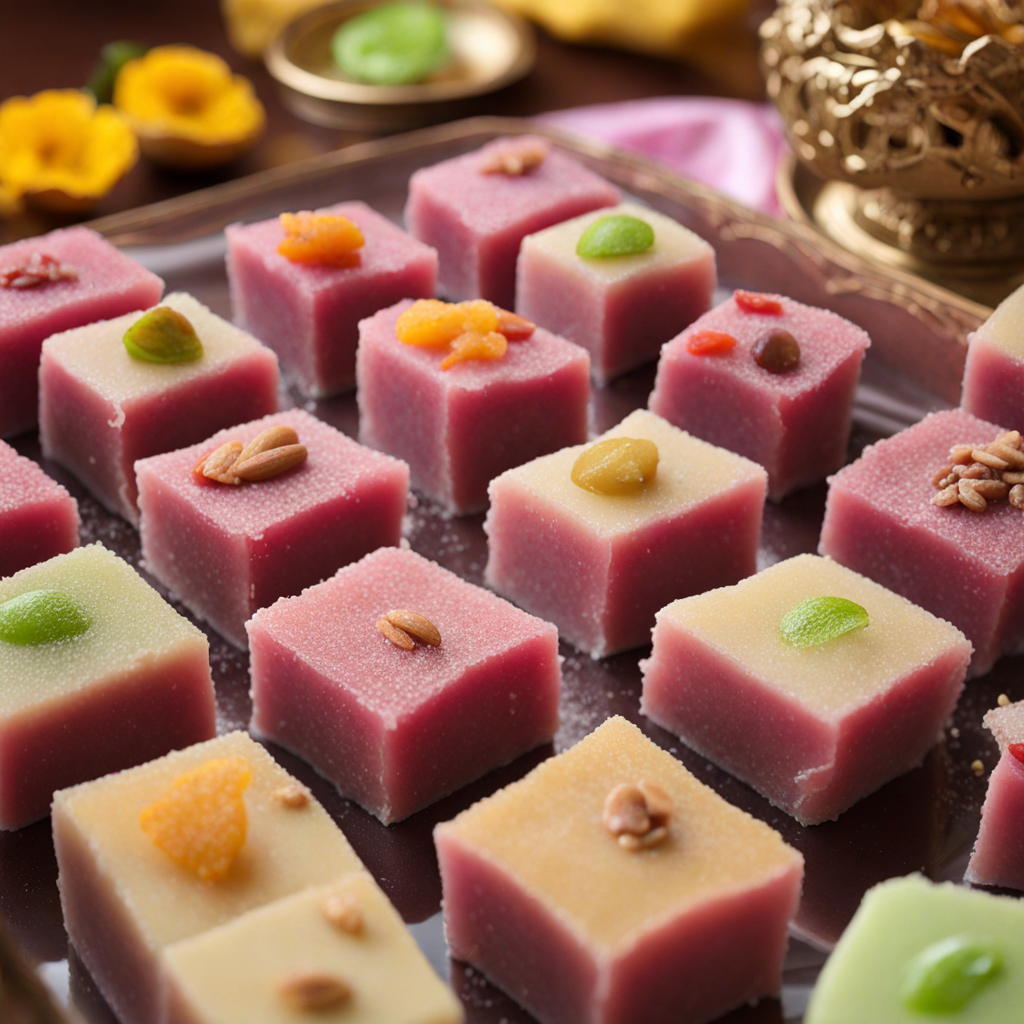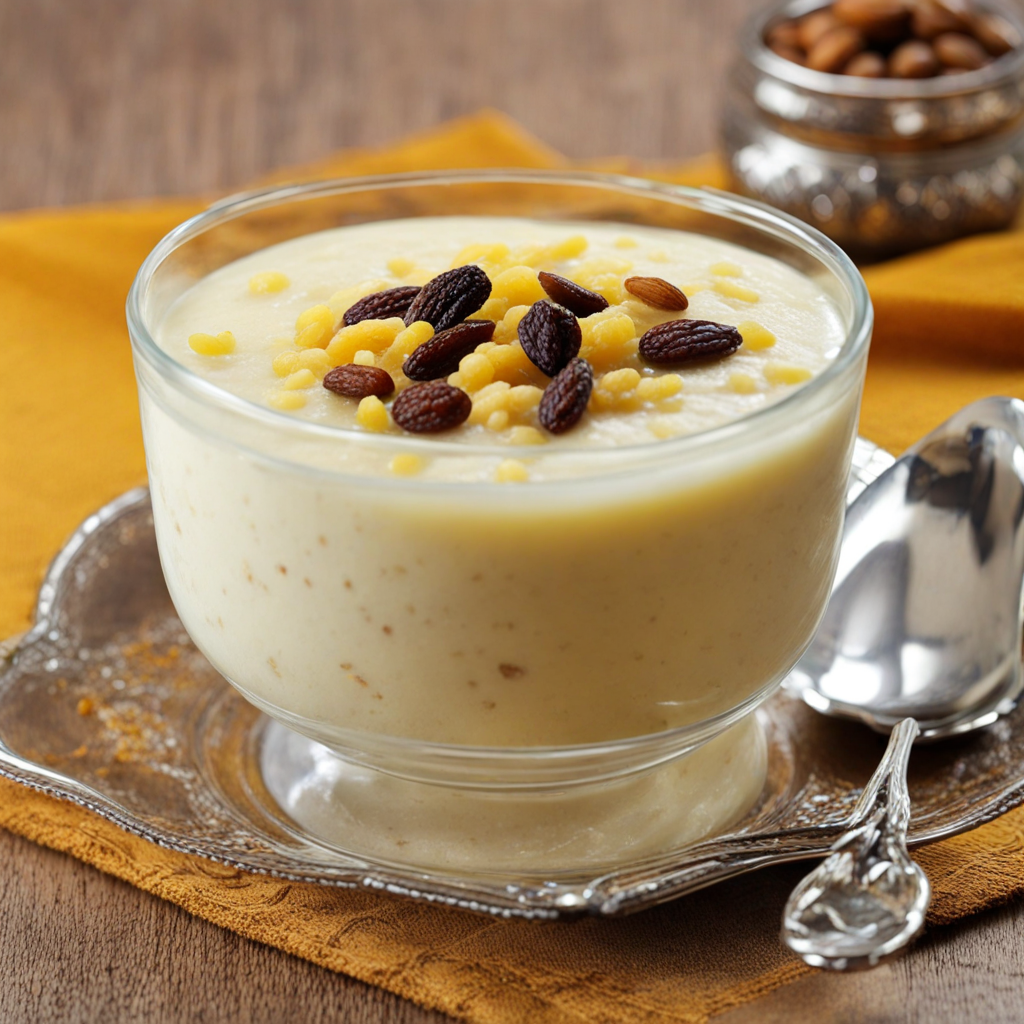Achar
Achar, a vibrant and tangy pickle, is a beloved staple in Pakistani cuisine, celebrated for its bold flavors and aromatic spices. Made from a variety of fruits and vegetables such as mangoes, lemons, and carrots, it is typically preserved in a blend of mustard oil, vinegar, and an array of spices like fenugreek, mustard seeds, and red chili powder. The process of creating achar involves marinating the ingredients, allowing them to absorb the spicy and sour elements, resulting in a dish that is both piquant and savory. Each region in Pakistan has its own unique twist on achar, highlighting local produce and preferred spice combinations, making it a versatile accompaniment to any meal. One of the most popular varieties is 'Mango Achar,' which captures the essence of summer with its ripe, tangy mangoes. The mango pieces are combined with spices and oil to create a sweet and sour explosion of flavor that pairs beautifully with rice, flatbreads, or even as a condiment for grilled meats. Another favorite is 'Lemon Achar,' which offers a zesty kick that can enliven any dish. The combination of fresh lemon and spices creates a refreshing and aromatic pickle that tantalizes the taste buds and adds a delightful punch to meals. Achar is not just a condiment; it embodies the rich culinary heritage of Pakistan. It is often served at festive occasions and family gatherings, bringing people together to enjoy the shared experience of flavorful food. The vibrant colors and diverse textures of achar add an enticing visual appeal to any plate, making it a feast for the senses. For those looking to explore new tastes, achar offers a unique opportunity to dive into the world of Pakistani flavors, showcasing the balance of heat and acidity that is intrinsic to its cuisine.
How It Became This Dish
A Culinary Journey Through Achaar: The Pickle Tradition of Pakistan Introduction Achaar, a beloved condiment in Pakistani cuisine, is much more than just a simple pickle. It serves as a vibrant symbol of cultural identity, culinary tradition, and regional diversity. In this exploration, we will delve into the origins of achaar, its cultural significance, and how it has evolved over time, reflecting the rich tapestry of Pakistan's history and diverse culinary landscape. Origins of Achaar The term "achaar" is derived from the Sanskrit word "aśṭa," which means "to preserve." The practice of pickling dates back thousands of years, with evidence found in ancient civilizations around the world. In the Indian subcontinent, including what is now Pakistan, pickling became a method to preserve fruits and vegetables, especially before the advent of refrigeration. The need to extend the shelf life of seasonal produce was paramount in ancient agrarian societies, where surplus harvests often yielded a bounty that could not be consumed immediately. Historically, the spices and techniques used in achaar were influenced by the diverse cultures that have inhabited the region, including the Indus Valley Civilization, the Mughals, and various colonial powers. The Mughal Empire, with its extensive trade networks, introduced a variety of spices to the subcontinent, enhancing the flavor and complexity of achaar. Ingredients like mustard seeds, fenugreek, turmeric, and chili were incorporated into the pickling process, contributing to the unique flavor profiles that characterize achaar today. Cultural Significance Achaar holds a special place in Pakistani culture, transcending its role as a mere accompaniment to meals. It is often seen as a staple in households, reflecting the culinary heritage of different regions. Each province in Pakistan boasts its own distinct varieties of achaar, influenced by local ingredients, climate, and culinary traditions. For instance, Sindh is known for its tangy mango achaar, while Punjab often features spicy lemon and mixed vegetable pickles. The cultural significance of achaar is also evident during special occasions and festivals. It is commonly served at weddings, Eid celebrations, and family gatherings, symbolizing hospitality and the warmth of shared meals. Moreover, achaar is often passed down through generations, with families having their own cherished recipes that evolve over time. This practice of creating and sharing achaar fosters a sense of community and belonging, as recipes become intertwined with personal and cultural narratives. Regional Varieties and Ingredients The diversity of achaar in Pakistan is astonishing. The following are some of the most popular varieties, each with its own unique blend of spices and preparation methods: 1. Mango Achaar (Aam Ka Achaar): Perhaps the most iconic type, mango achaar is made from raw, green mangoes combined with spices like mustard seeds, salt, and chili powder. The tartness of the mangoes pairs beautifully with the heat of the spices, creating a delightful balance. 2. Lemon Achaar (Nimbu Ka Achaar): This achaar features lemons, often mixed with spices such as cumin and turmeric. Its zesty flavor adds a refreshing kick to various dishes, making it a favorite among many. 3. Mixed Vegetable Achaar (Sabzi Ka Achaar): A medley of seasonal vegetables, such as carrots, radishes, and cauliflower, is used to create this variety. The vegetables are pickled with a blend of spices, offering a crunchy and tangy addition to meals. 4. Chili Achaar (Mirch Ka Achaar): For those who love heat, chili achaar is a fiery option made with whole green or red chilies. This achaar often includes vinegar for acidity and a touch of sweetness, balancing the spice. 5. Garlic Achaar (Lehsan Ka Achaar): Garlic lovers rejoice with this pungent variety, where cloves are pickled with spices, providing a robust flavor that pairs well with numerous dishes. 6. Carrot Achaar (Gajar Ka Achaar): Commonly made during the winter months, this achaar uses grated or sliced carrots, often mixed with spices and vinegar, creating a sweet and tangy profile. Preparation Techniques The preparation of achaar is an art that requires patience and precision. Traditionally, the process begins with the selection of fresh ingredients, which are then washed and cut into appropriate sizes. Spices are ground and mixed, creating a flavorful paste that is combined with the vegetables or fruits. The mixture is then packed tightly into jars and left to marinate under the sun for several days or weeks, allowing the flavors to meld and intensify. While traditional methods are still widely practiced, modern techniques have also emerged. Many households now opt for quicker methods, using vinegar and refrigeration to speed up the pickling process. However, the essence of achaar remains rooted in its time-honored preparation, emphasizing the importance of patience and attention to detail. Contemporary Trends and Global Influence In recent years, achaar has gained international recognition, transcending borders and becoming popular among food enthusiasts worldwide. Pakistani restaurants in the West often feature achaar on their menus, introducing diverse audiences to its rich flavors and textures. Food bloggers and influencers have also played a significant role in promoting achaar, showcasing unique recipes and creative serving suggestions. Moreover, the rise of fusion cuisine has led to innovative interpretations of achaar. Chefs experiment with unconventional ingredients, creating new varieties that blend traditional flavors with contemporary culinary practices. For example, achaar-infused sauces, dressings, and even desserts have emerged, appealing to the adventurous palate. Conclusion Achaar is a testament to the rich culinary heritage of Pakistan, embodying the traditions, flavors, and stories that have shaped the region's food culture. From its ancient origins to its modern-day iterations, achaar continues to evolve while remaining a cherished part of Pakistani identity. As families gather around meals adorned with this vibrant condiment, they not only savor the flavors but also celebrate the connections that bind them to their heritage and to each other. The journey of achaar is a reminder of the power of food to transcend time and culture, preserving the essence of a community while adapting to the tastes of a new generation.
You may like
Discover local flavors from Pakistan







